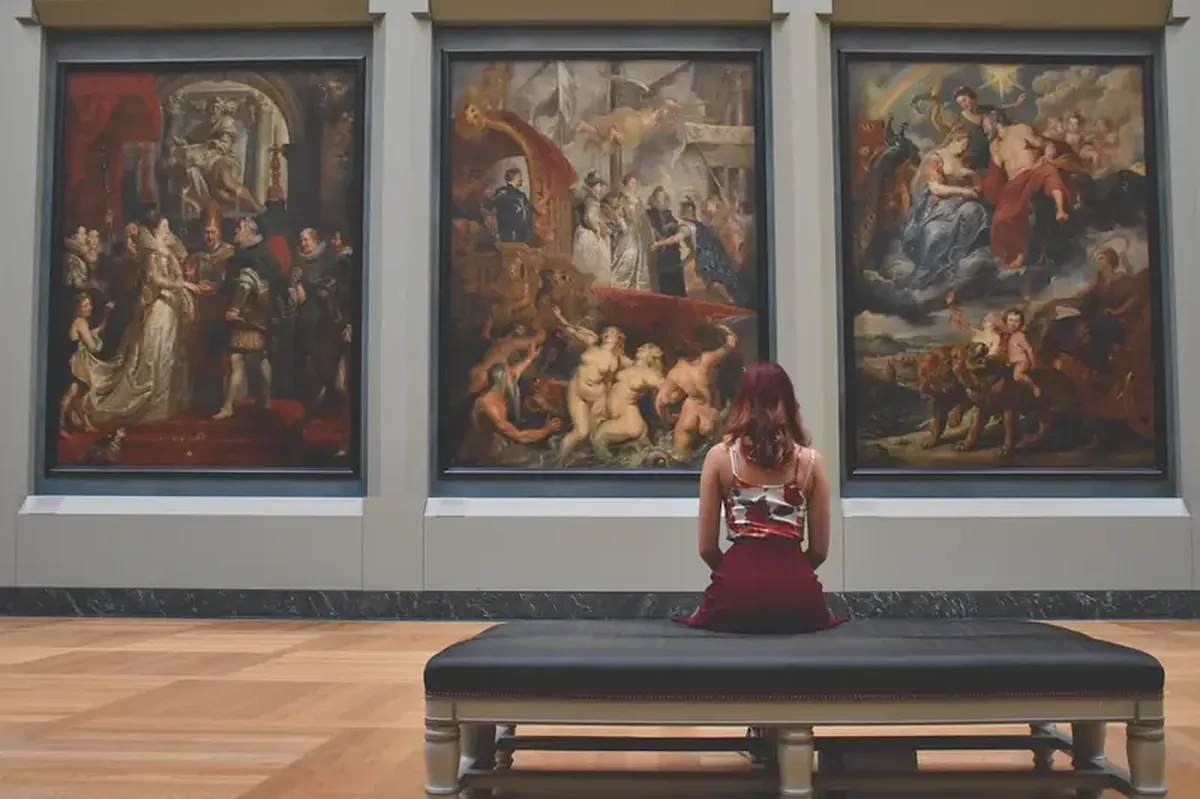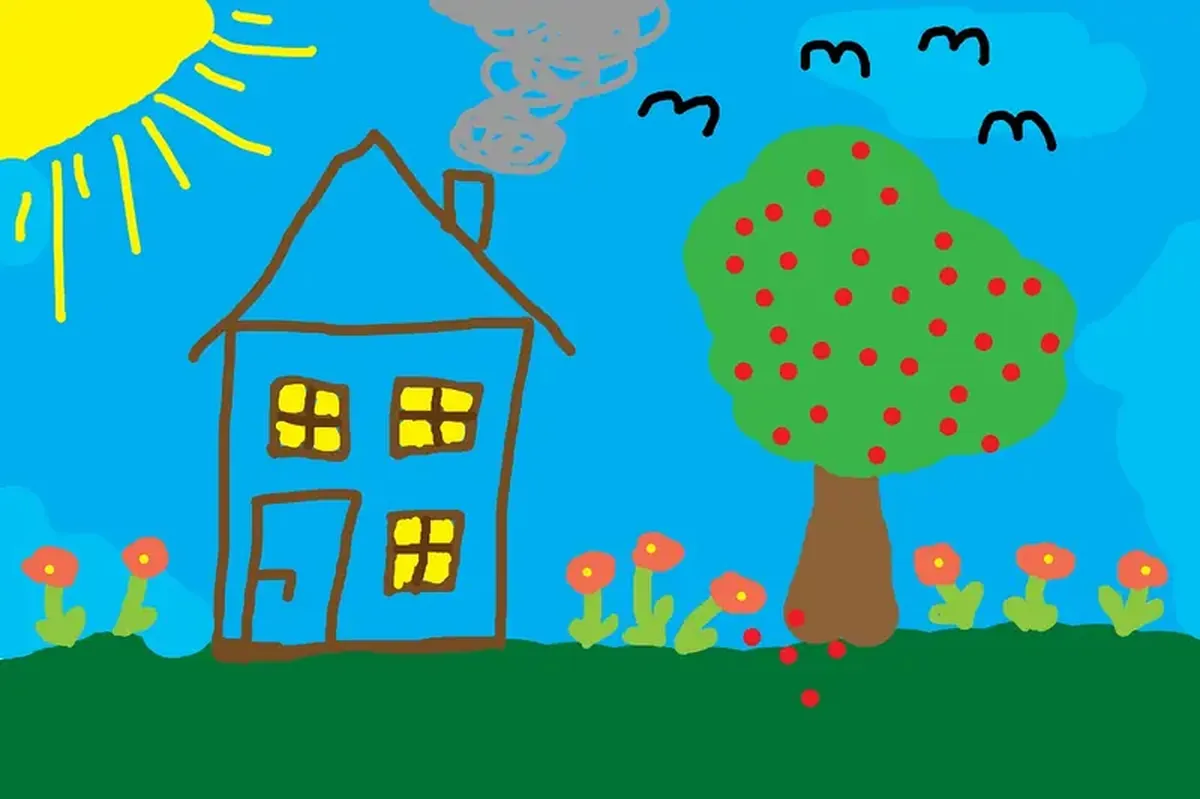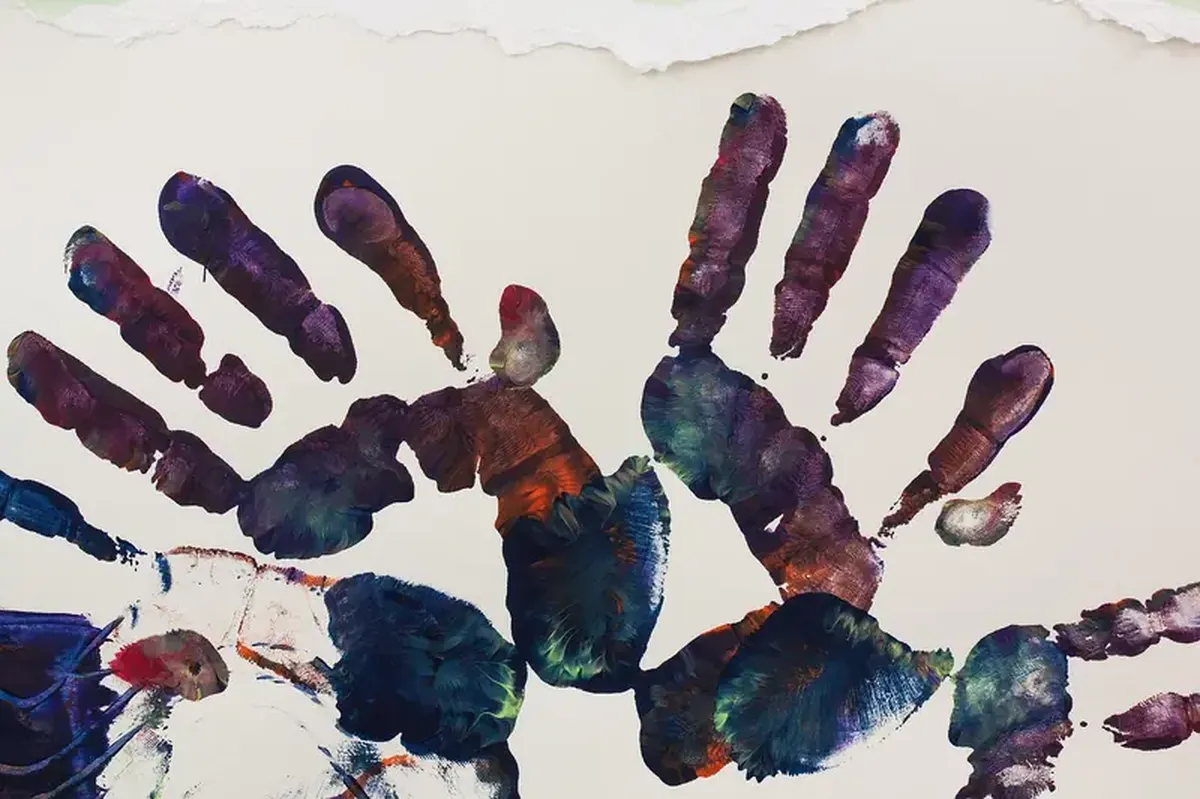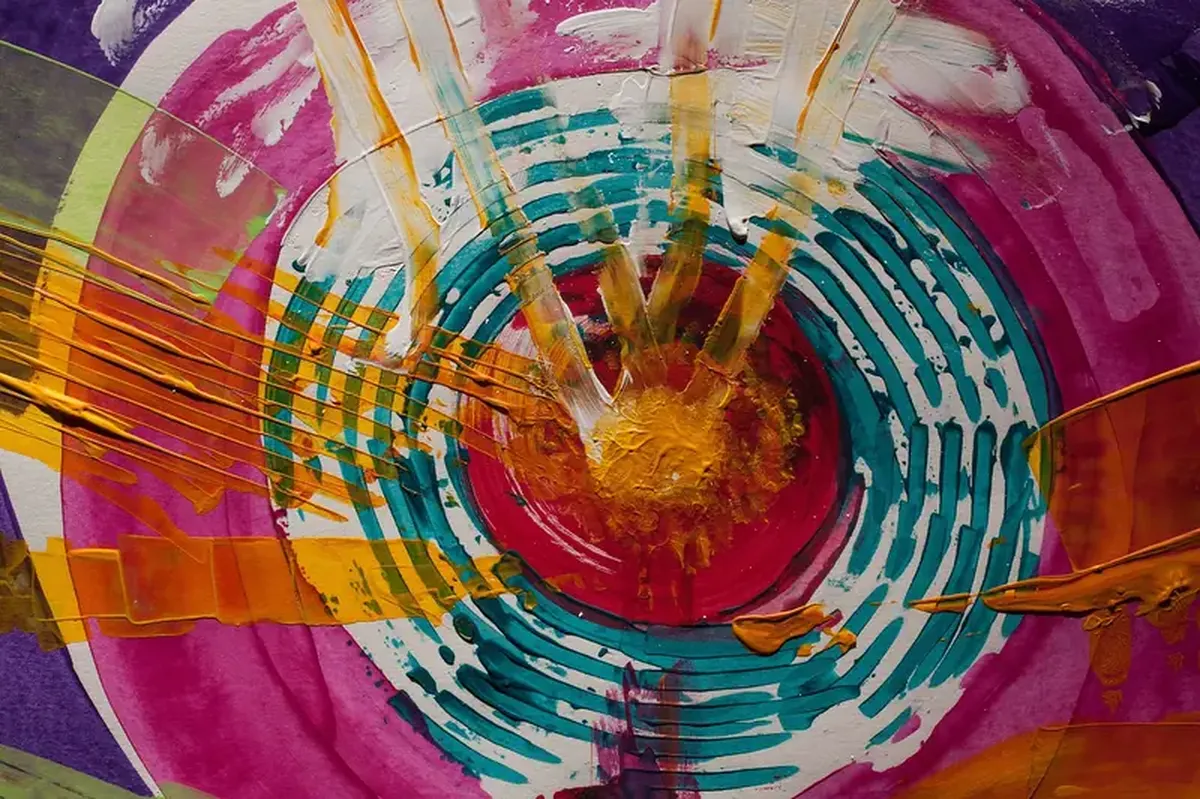
Art therapy is a psychological intervention rooted in art and creativity. This form of psychotherapy encompasses two main approaches: creative self-expression and the appreciation of existing works of art. Who developed this method, and who can benefit from it?

The Roots in Expressionism
In its simplest terms, this therapeutic method often refers to the positive impact of visual art on the emotional and psychological sphere. Expressionism, with its focus on emotionally charged expressions of an individual’s inner reality, is considered the source of art therapy. It became a scientifically grounded practice at the intersection of psychology and the visual arts in the 1940s. New diagnostic and treatment pathways for mental health issues were shaped by the attention given to outsider art. American psychologist Tarmo Pasto recognized in the drawings of children and individuals with mental illnesses a reflection of their internal states. This distinction set these creative outputs apart from the works of trained artists, who express emotions within the confines of artistic tasks.

The term “art therapy,” meaning “healing through art,” was coined in 1938 by artist Adrian Hill. In describing his work with patients in tuberculosis sanatoriums, he noted that creativity, as a meditative process involving complete immersion in another reality, aided the recovery of those engaged in drawing. In the United States, art therapy methods were applied in the psychological rehabilitation of children displaced during World War II from Nazi camps. This new approach aligned with the psychoanalytic insights of Sigmund Freud and Carl Gustav Jung, who believed that the products of artistic activity express unconscious mental processes. The method involves studying spontaneous drawings created by the artist’s own initiative, as well as impromptu drawings made at the request of the psychotherapist. Drawing therapy is used to address psychological trauma, crisis states, and conflicts.
Manifestation of States
In this method, art serves as a medium for communication between the therapist and the patient. It allows for the exploration of fundamental feelings and emotions through visual imagery: love, joy, anger, resentment, fear, hatred, and more. The goal of art therapy is to harmonize mental states through self-expression and self-discovery. By developing self-control and the creative abilities of individuals, art therapy enhances self-esteem, processes suppressed emotions, and provides socially acceptable outlets for aggression and other negative attitudes. From a psychoanalytic perspective, the working mechanism here is sublimation—replacing and redistributing energy to achieve results in creative activity (a protective adaptation of the psyche aimed at relieving internal tension).

Art therapy facilitates contact and provides material for psychodiagnostics. Neither the patient nor the therapist needs artistic skills: one must express themselves through visual means, while the other must interpret the symbols observed. Indications for art therapy include low self-esteem, dissatisfaction with relationships, emotional instability, impulsive reactions, low mood, heightened anxiety, feelings of loneliness, interpersonal conflicts, stress, and phobias. While this corrective tool is suitable for children with autism or speech disorders, in other situations (such as bulimia, anorexia, alcohol dependence, etc.), art therapy may only serve as an auxiliary practice. It will not be the primary method of treatment for addictions or clinical diagnoses.
Indicators of Feelings
Art therapy engages both hemispheres of the brain: the right (responsible for imaginative thinking) and the left (abstract-logical). During the drawing process, individuals project their desires, feelings, and dreams onto the images, reshaping their attitudes toward various situations and confronting unpleasant images and traumatic experiences without pain. Drawing alleviates tension and fear, making it useful for correcting stress states or neuroses. By changing the themes of the drawings, the psychotherapist aims to shift attention and focus on what is important. For the specialist, both the content and the means of expression can be informative: the repetition of details, composition, size, shape, color, and other indicators of the emotional state of the artist.

The meaning of color is interpreted based on the individual’s age and cultural background. For instance, red can evoke associations with war or life force in different cultures and may be interpreted not only as blood, cruelty, conflict, and aggression but also as rebirth, life, and attention-grabbing. Orange is typically associated with fertility, pleasure, and happiness, although in Buddhism, it symbolizes renunciation. Yellow symbolizes the sun and warmth, as well as deception and illness. Green (a sacred color in Islam) represents growth and life, while also signifying inexperience and immaturity. Blue symbolizes loyalty, trust, wisdom, as well as skepticism and sadness. White represents purity, experience, and beginnings, but also passivity, helplessness, and weakness. Black signifies strength, moderation, reliability, but also decay or dirt.
Types of Art Therapy
In addition to painting, art therapy can involve other forms of creativity. Among the new directions is sand therapy (healing through creating images with sand). Other forms of art therapy include sculptural therapy, dance therapy, drama therapy, music therapy, and more. There are also play therapy, doll therapy, and bibliotherapy (including fairy tale therapy). The means of art therapy can encompass performing arts, architecture, literature, photography, or film. The realm of visual arts, based on the movement of images, was once considered “the most important of the arts.” The method of healing through viewing and creating screen products is known as film therapy.

The effect of film is built not only on the reproduction of objects and events but also on their psychological reflection: the observance, concentration of attention, cognitive processes, and perceptual activities of the viewer, meaning the ability to penetrate another’s inner world, empathize, and interpret non-verbal information. By eliciting various psychological reactions, film becomes a source of new experiences, satisfying both positive and negative expectations. The impact of movies lies in shaping worldviews and providing opportunities to experience in a psychological process what one fears confronting in real life.
Reality Replacement
Film triggers the same brain reactions in people as experiencing corresponding situations in real life. When we feel down, watching an inspiring movie can lift our spirits and distract us from gloomy thoughts, as the brain connects the emotions evoked on screen with real life. Psychologists refer to binge-watching captivating series as the most accessible source of dopamine—instant gratification. Viewers quickly become accustomed to this pleasurable state, and the “drug” creates dependency: we crave the continuation of the action that elicits a positive psychological response. However, films can have both positive and negative effects on the psyche.

The outcomes of a film session can include joy, euphoria, catharsis, pain, stress syndrome, and psychological trauma. Research has shown that sad films evoke feelings of sorrow in viewers, aggressive plots provoke feelings of hostility, and horror films heighten feelings of fear. Yet, scientists have also identified reasons for the popularity of horror films. Psychologist Glen Walters attributed factors such as tension (viewers enjoy when something captures and holds their attention), relevance (touching on vulnerable psychological aspects), and unreality (the awareness that one is safe) as responsible. These components of horror transform individuals who avoid dangerous situations in life into brave souls willing to thrill themselves.
Intense Sensations
The “appeal of horror” is explained by psychologists through our genetic memory. According to scientists, people need intense sensations because all past generations have gone through adventures, trials, and risks: our ancestors had to fight off predators and enemies. The fear experienced during horror films displaces everyday anxieties, alleviating psychological distress. By recognizing their own safety, individuals derive pleasure from the on-screen nightmare, learning to control fear and respond calmly to stress. From this perspective, film serves as an important school of emotional experience. Only harsh reality can overcome the curiosity for horror films: when fear is abundant in life, few will want to see it on screen as well.

Psychologists believe our interest in danger is rooted in evolution (without such curiosity, humanity would not have survived as a species), but experts describe the constant viewing of frightening plots as a deviation. This is because the same areas of the brain are activated as in post-traumatic stress syndrome, where a person has experienced real horror in life and requires treatment. The pleasure derived from horror films is accessible only to those with a high dopamine reward function. For others, such therapy may not be suitable. This type of treatment is contraindicated for crime victims and introverts deeply immersed in their inner worlds. One should not treat their own phobias with horror films without consulting a psychotherapist, as not all fears are the same, and the same dose of the neurotransmitter hormone affects people differently.
To Lift the Spirit
Among the films that help combat depression, psychologists have listed the following works: “Joy” (2015); “Tully” (2017); “Collateral Beauty” (2016); “Begin Again” (2013); “The Royal Tenenbaums” (2001); “Little Miss Sunshine” (2006); “Numb” (2007); “It’s Kind of a Funny Story” (2010); “Cake” (2014); “Ta’m e guilass” (1997); “The Perks of Being a Wallflower” (2012); “Side Effects” (2013); “The Beaver” (2010); “Lost in Translation” (2003).
These screen stories revolve around problem-solving, experiencing loss, finding joy, and rebirth into life. The heroes of these uplifting narratives are victims of emotional hunger, age crises, and challenging life circumstances. Depression has brought them to the edge of despair, which can be seen as an acute need for happiness. These films do not sugarcoat despair and pain; they honestly depict how difficult it can be to find a way out of a dead end. By overcoming the “dark streak” alongside the on-screen characters, viewers witness how, in the bleakness of life, those whom fortune has turned away from seek the switch that ignites optimism and self-control. The hopeful endings convince skeptics that troubles are not permanent and that individuals can endure more than they realize.
